It has seen tons and tons of changes since then.
What do AI Overviews mean for SEO? Is SEO finally dead? Or is everything fine?
Well, good news and bad news. Whether you like it or not, search has changed.
Here’s everything we know about Google’s AI Overviews to date:
Google’s AI Overviews are AI-generated summaries for search queries.

They appear above the traditional search results and provide a summarized answer in response to the query while pulling information from multiple sources. They also include links to sources for further reading.

- 10 May 2023 — Google announces the Search Generative Experience (SGE) experiment
- 25 May 2023 — Google opens access to SGE for users who signed up for the waitlist.
- 22 March 2024 — Google starts testing AI Overviews in the main Google Search results, even if you did not opt into SGE.
- 14 May 2024 — Google officially launches AI Overviews for the U.S. Google also launches a new ‘Web’ filter for users who want only text-based webpages in search results.
- 24 May 2024 — AI Overviews come under fire for giving dangerous and wrong answers. For example, it recommended using non-toxic glue to give pizza sauce more tackiness, eating at least one small rock a day, and drinking urine to pass kidney stones quickly.
- 30 May 2024 — Google responds to the brouhaha by explaining how it intends to improve AI Overviews.
- 15 Aug 2024 — Google expands AI Overviews to six more countries: the UK, India, Japan, Indonesia, Mexico, and Brazil. It also begins showing AI Overviews for Incognito mode and users who are not signed in. Additionally, it launches the ability to “save” a specific AI Overview and tests adding links to relevant web pages directly within the text of AI Overviews.
- 23 Aug 2024 — Google’s John Mueller confirms that AI Overviews are affected by core updates.
- 28 October 2024 — Google expands AI Overviews to more than 100 countries and territories around the world. This expansion also adds support for multiple languages: English, Hindi, Indonesian, Japanese, Portuguese, and Spanish. Google also rolled out a new desktop design with a right-hand panel of source links for AI Overviews, and officially launched in-line links within the AI summary text for all users.
- 5 March 2025 — Google announces an upgrade to AI Overviews. AI Overviews in the U.S. are now powered by Gemini 2.0, a more advanced model, which improves quality and allows AI Overviews to appear for more complex queries (e.g., coding questions, advanced math, and even some multimodal queries with images). Google also announces a new feature called AI Mode as a Labs experiment. With AI Mode, you’ll be able to ask complex, multi-part questions and ask follow-ups to dig deeper.
- 25 March 2025 — Google expands AI Overviews to more countries in Europe: Austria, Belgium, Germany, Ireland, Italy, Poland, Portugal, Spain, and Switzerland. This expansion also added new supported languages, such as German, Italian, Polish, and French (via Switzerland). Due to regulatory considerations, Google rolled this out in Europe to signed-in users aged 18+ only.
- 11 April 2025 — Google confirms that AI Overviews links to their own search results.
- 23 April 2025 — Google begins testing AI Overviews on YouTube.
- 20 May 2025 — Google rolls out AI mode to everyone in the U.S.
Google’s iterative approach means AI Overviews are continually being refined. Expect the feature to keep changing.
The extensive rollout already proves that Google is all-in on AI Overviews. Coupled with Google’s AI Mode experiment, search, or at least Google Search, is about to change a lot.
Currently, Google still has the largest market share in the world. And will likely still be in the foreseeable future.
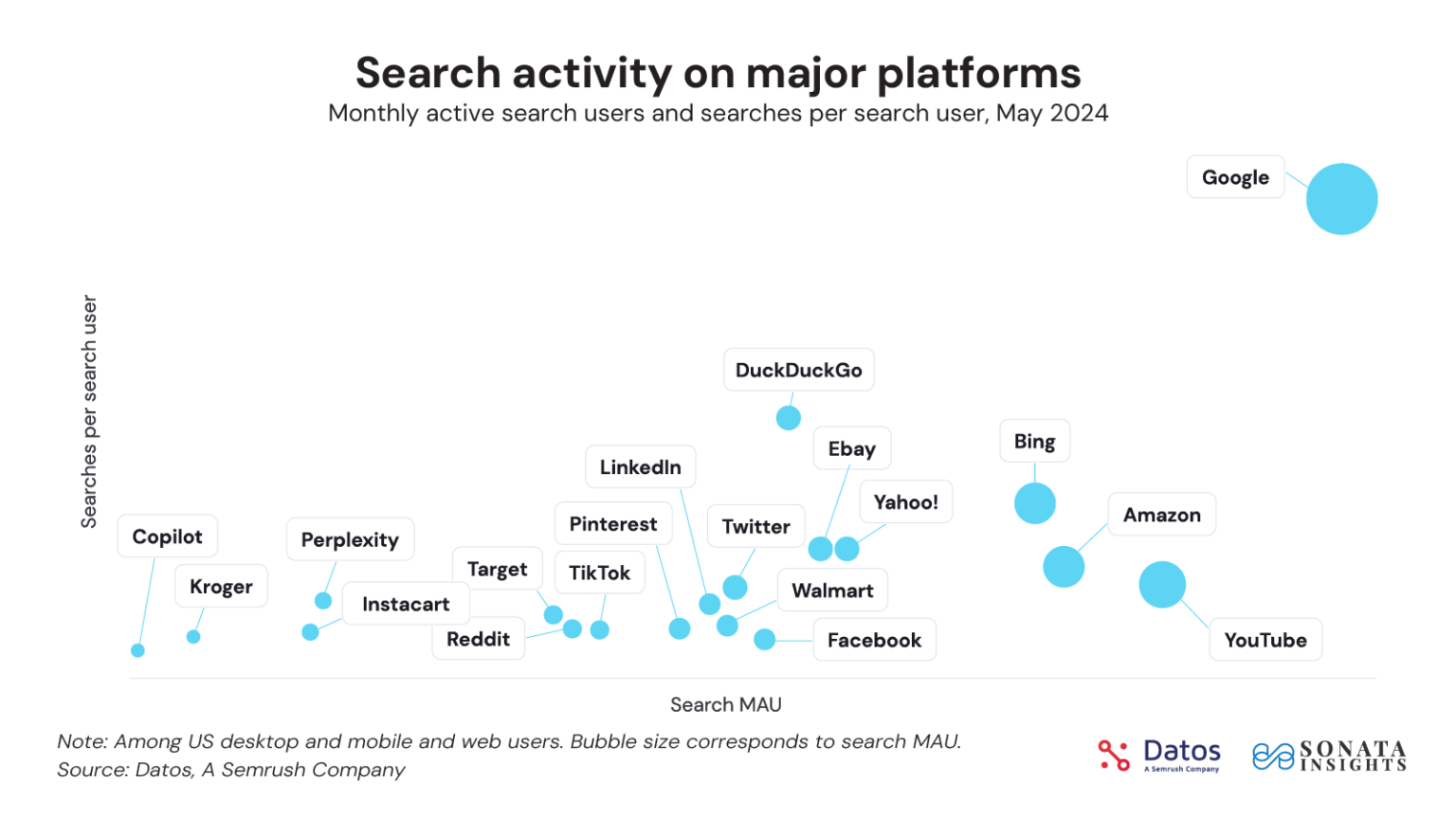
So, if you want to continue to get traffic from Google, you need to pay attention to Google’s AI Overviews and other AI experiments.
At a high level, Google’s AI Overviews use a technique called retrieval-augmented generation (RAG). This means the AI doesn’t just rely on its pre-trained knowledge (which could be outdated or generic). Instead, it actively retrieves fresh information from the web and uses that to construct its answer.
AI Overviews is powered by Google’s own LLM, Gemini. Thanks to Rich Sanger, who looked at Google’s patent, we have an idea of how Google’s AI Overviews work:
- You enter a search query.
- Google’s LLMs work to understand the context and intent of your query.
- Google’s systems then fetch relevant content from the index. It also considers related searches or what others tend to click on for similar queries.
- Alarge language model (LLM)—like Google’s Gemini—takes all that collected information and synthesizes a summary answer. This summary aims to directly address your query in a helpful way, often combining points from several sources.
- Google then attaches citations (links) to the actual source web pages within the AI-generated response. This is what Google refers to as “grounding” the answer. Grounding helps ensure accuracy and lets users click through to verify information.
- Over time, the system learns from user interactions. If users consistently click one of the cited sources in the Overview, or ignore the Overview and click a certain result instead, Google can adjust future outputs accordingly.
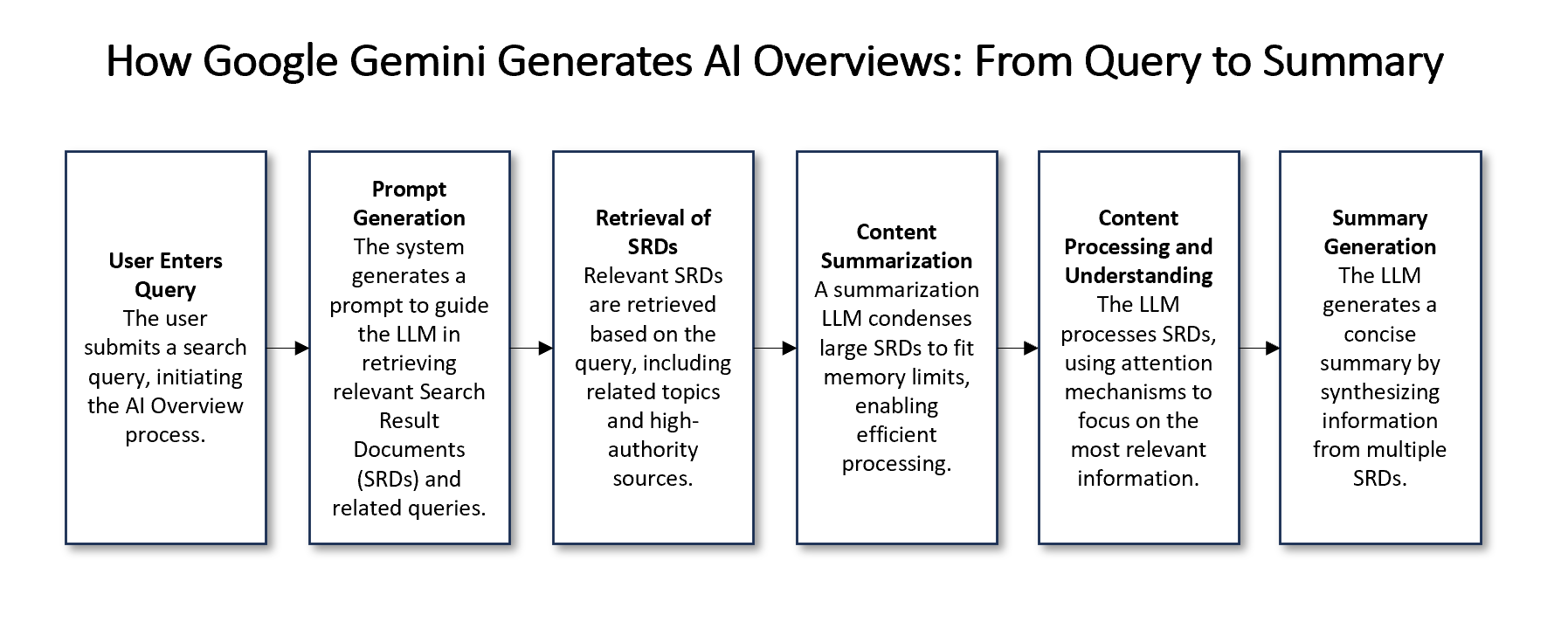
Google has noted that AI Overviews can be context-aware and user-aware. For example, if you’re signed in, it might use your recent searches or location to fine-tune the answer.
AI Overviews have been one of the most significant changes to the SERPs in recent years. Countless studies have been conducted to observe their impact on search results.
Here’s what we know so far:
- AI Overviews reduce clicks by 34.5%.
- AI Overviews have grown by 116% since the March Core Update.
- AI Overviews show for 9.46% of all keywords and 16% in the U.S. on desktop.
- AI Overviews show for 54.61% or more of all Google searches by volume.
- AI Overviews show for ~12.5-16.5% of searches in countries where they rolled out.
- The top 50 domains have 28.90% of all mentions, based on our analysis of 55.8M AIOs.
- AI Overviews show more than normal for informational queries, longer search queries, and queries with higher search volumes.
- AIOs show up less than normal for branded queries, local queries, and shorter search queries.
- 7 in 10 searchers never read past the first third of an AIO.
- Younger mobile users embrace AI answers and social proof while older searchers still dig for blue links and authority sites
- Reddit threads, YouTube demos, and forum posts soak up roughly a third of the traffic that AIO leaves behind.
Unfortunately for all of us, Google will not distinguish between AI Overviews and organic search in Google Search Console. They will lump all the impressions and clicks together.
So, if you’d like to track the visibility of AI Overviews, you’ll have to use a third-party tool like Ahrefs.
For example, if you enter your domain into Site Explorer and go to the Organic keywords report, you can filter for keywords where you’re ranking in the AI Overview (or not!):
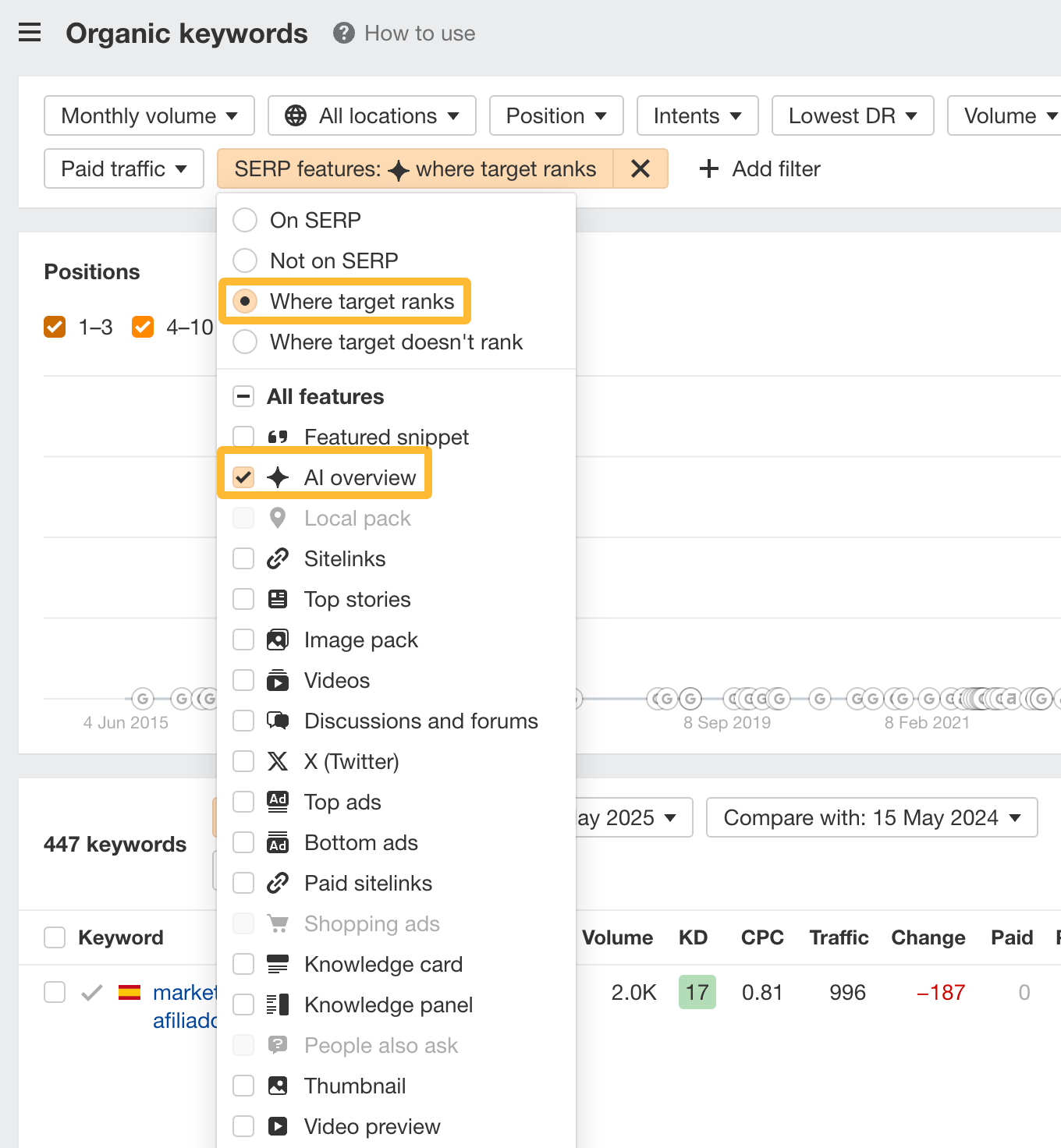
You can also use Brand Radar to track your brand mentions in AI Overviews:
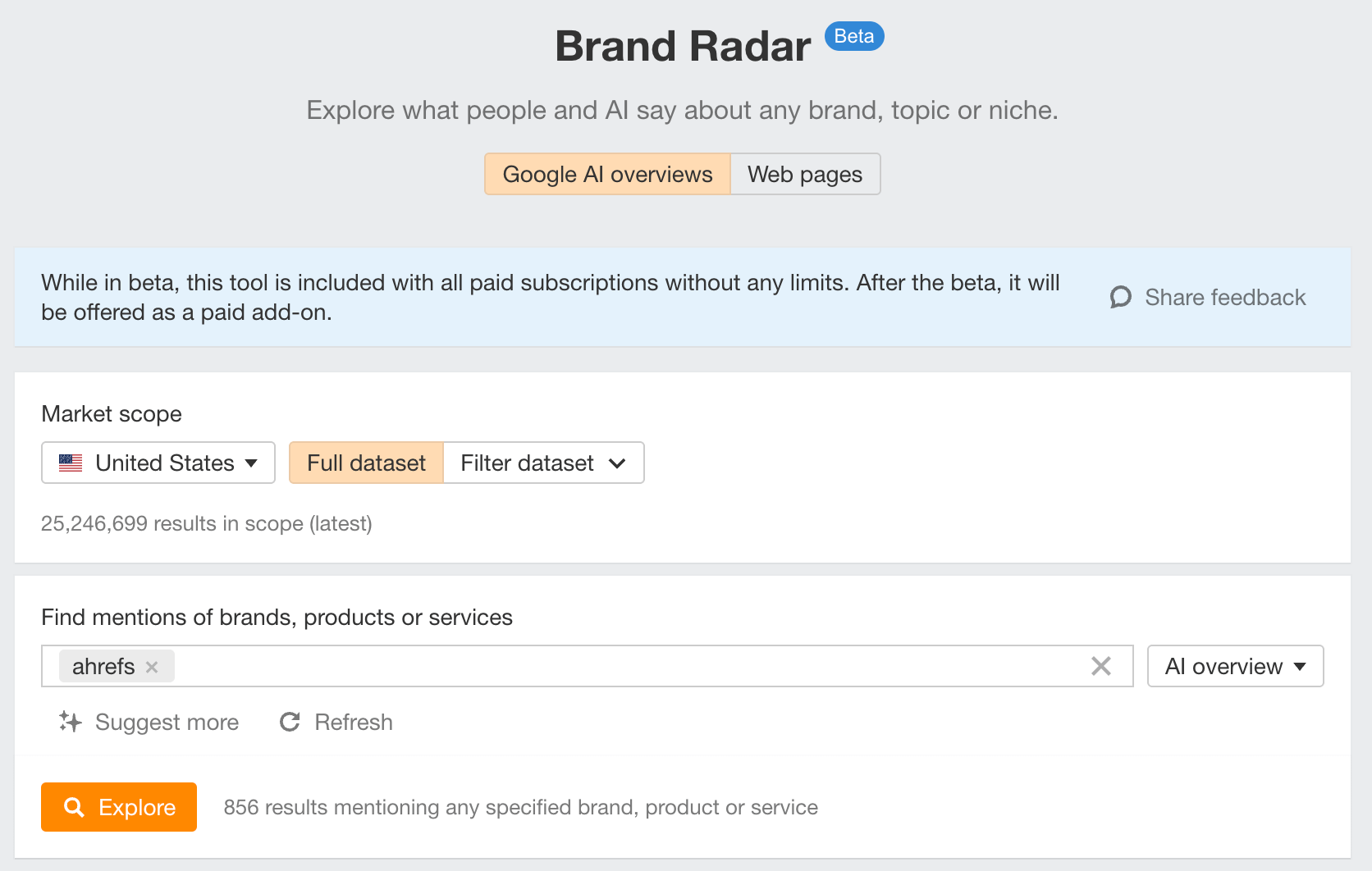

You can also see how you’re sizing up in AI Overviews against your competitors:
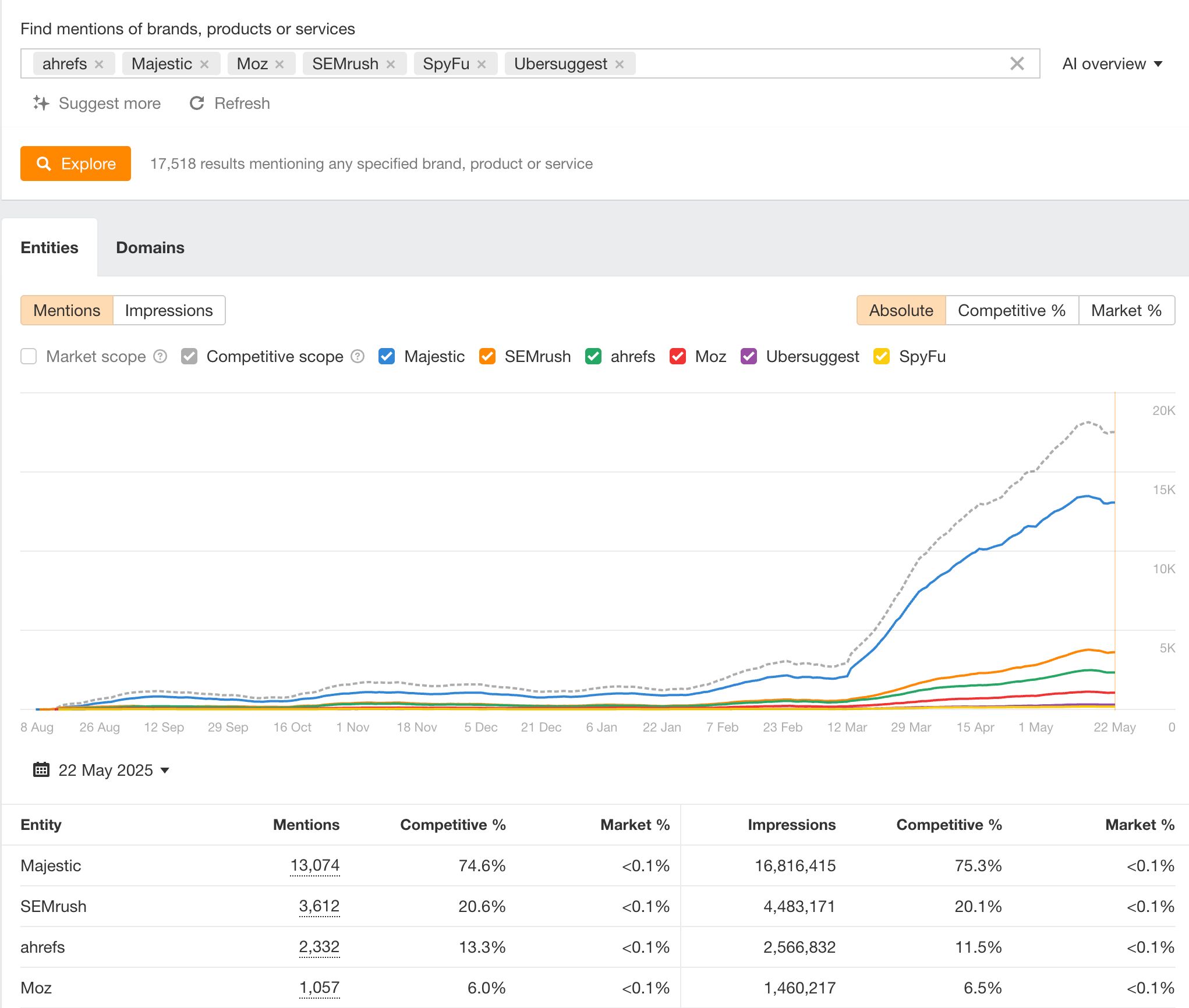
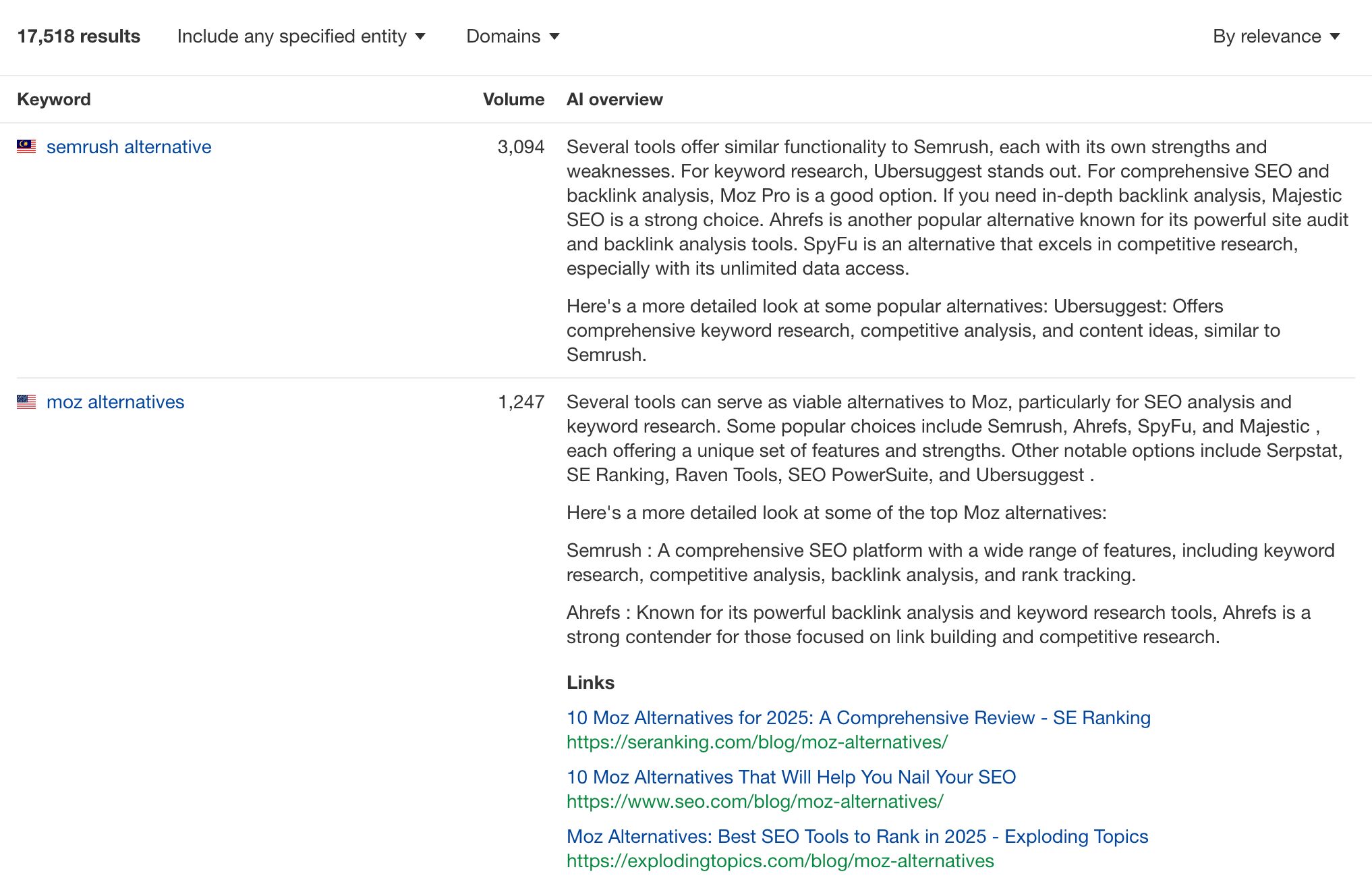
Considering that Google seems to be aligning AI Overviews with organic results, your best bet is to continue following SEO best practices and aim to rank high on Google itself.
In fact, if we look at Rich Sanger’s recommendations from his latest study on AIOs, you’d find that it is essentially SEO basics:

In short, even though Google has now introduced AI Overviews, the fundamentals of SEO are still the same. You need to:
- Do keyword research
- Make content users want to see by matching search intent
- Ensure the content is comprehensive and fulfills E-E-A-T
- Build links
This applies beyond AI Overviews. If your concern is to improve overall LLM visibility, your best bet is still great SEO done well.
Read this post from our Director of Content Marketing Ryan Law to find out why:
However, given that the overlap is still not 100%, it could suggest a potential avenue for ‘information gain’ to be rewarded. To put it in layman’s terms, Google wants to reward new information, not copycat content.
In fact, when Rich Sanger analyzed the patent, it suggested that Google was indeed looking for diversity:
“But understand that the AI Overview doesn’t only provide documents from the top sources for that query. It seeks out diversity. If the top-ranked content for that query is homogenous, it will move on to closely related queries. Earning top page rankings along with visibility in the AI Overview for targeted queries is the best case scenario.”
How can you add ‘information gain’ to your content? There are three ways:
- Experimentation — Go into the real world, test ideas, and collect data that no one else has.
- Experience — Actually experience the thing you’re making content about.
- Effort — Go beyond others and make better things or things that are more than words on a page.
Ryan expands on each concept in his article on standing out from AI content. I highly recommend reading it.
Are you upset that Google is ‘stealing’ your content to train their AI models?
The bad news: You can’t opt out of AI Overviews, as Google considers it a search feature.
The good news: You can block Google using the standard methods of noindexing your pages or using robots.txt. Bear in mind that this is a drastic measure, as it prevents Google from both showing your content in AI Overviews and the SERPs.
However, Google does provide an alternative method: ‘preview controls’, which are a way to tell Google not to provide a snippet in the SERPs or limit the amount of content that can be used.
Glenn Gabe ran an experiment to test whether Google would respect this.
The result? It did, but it took some time (and even a ping to Google’s John Mueller) for it to finally work. Regardless, it is an option if you want to opt out of AI Overviews.
Though there are ‘consequences’ (i.e. no search snippet), as Glenn Gabe discovered:
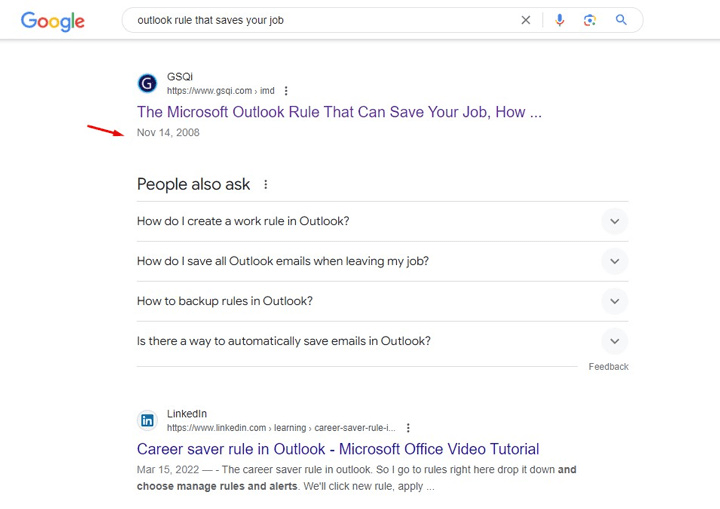
Final thoughts
This is everything we know about Google’s AI Overviews so far. But expect many things to change as Google continues to experiment.
However, whether it’s organic search results or AI Overviews, good SEO doesn’t change. So, carry on with executing the fundamentals of SEO to perfection.


